Quipu

In ancient times, people living in the Andes mountains used knotted strings to record information.
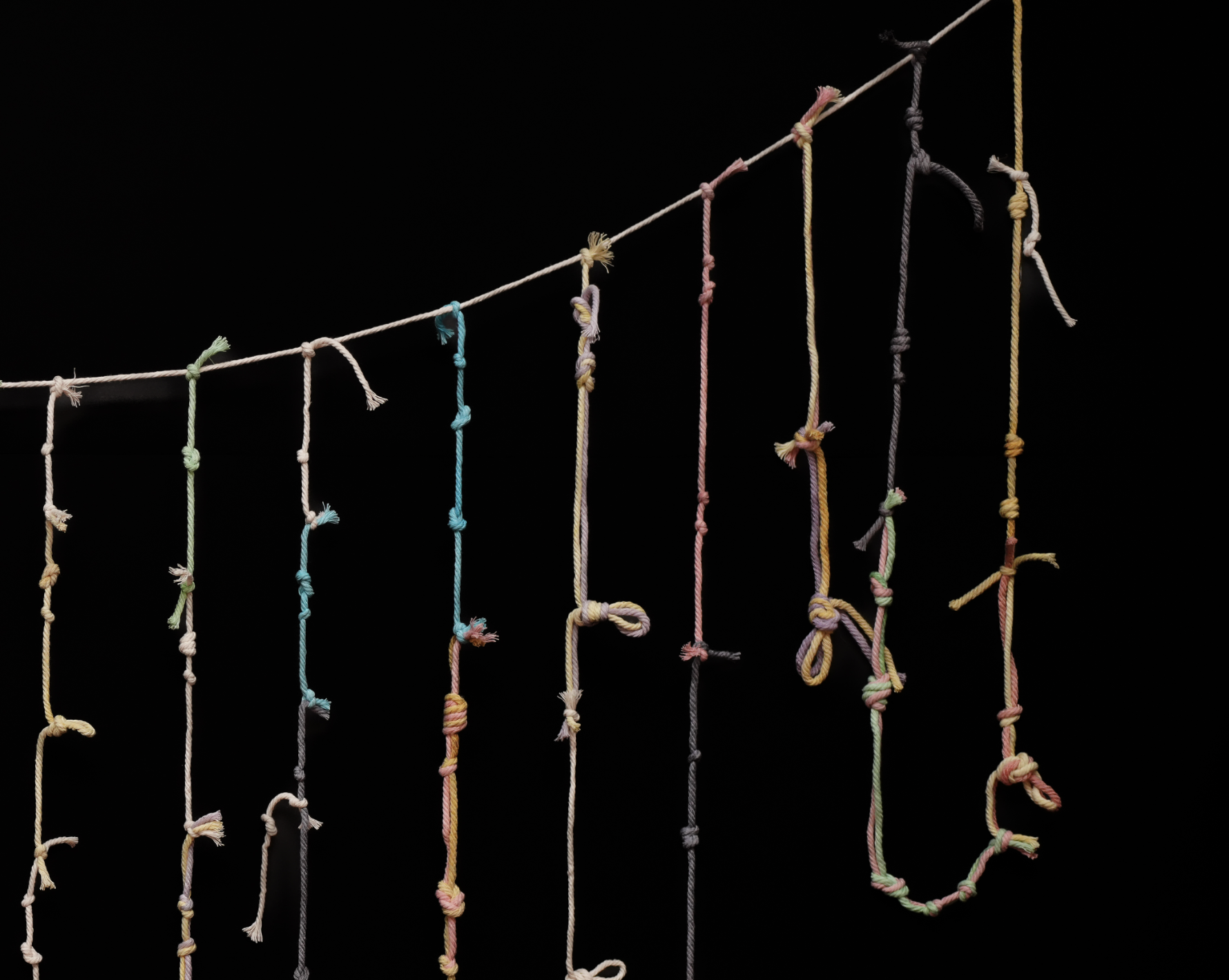
Scholars still debate how to interpret these quipu strings and whether they represent written language or are merely a tally system.
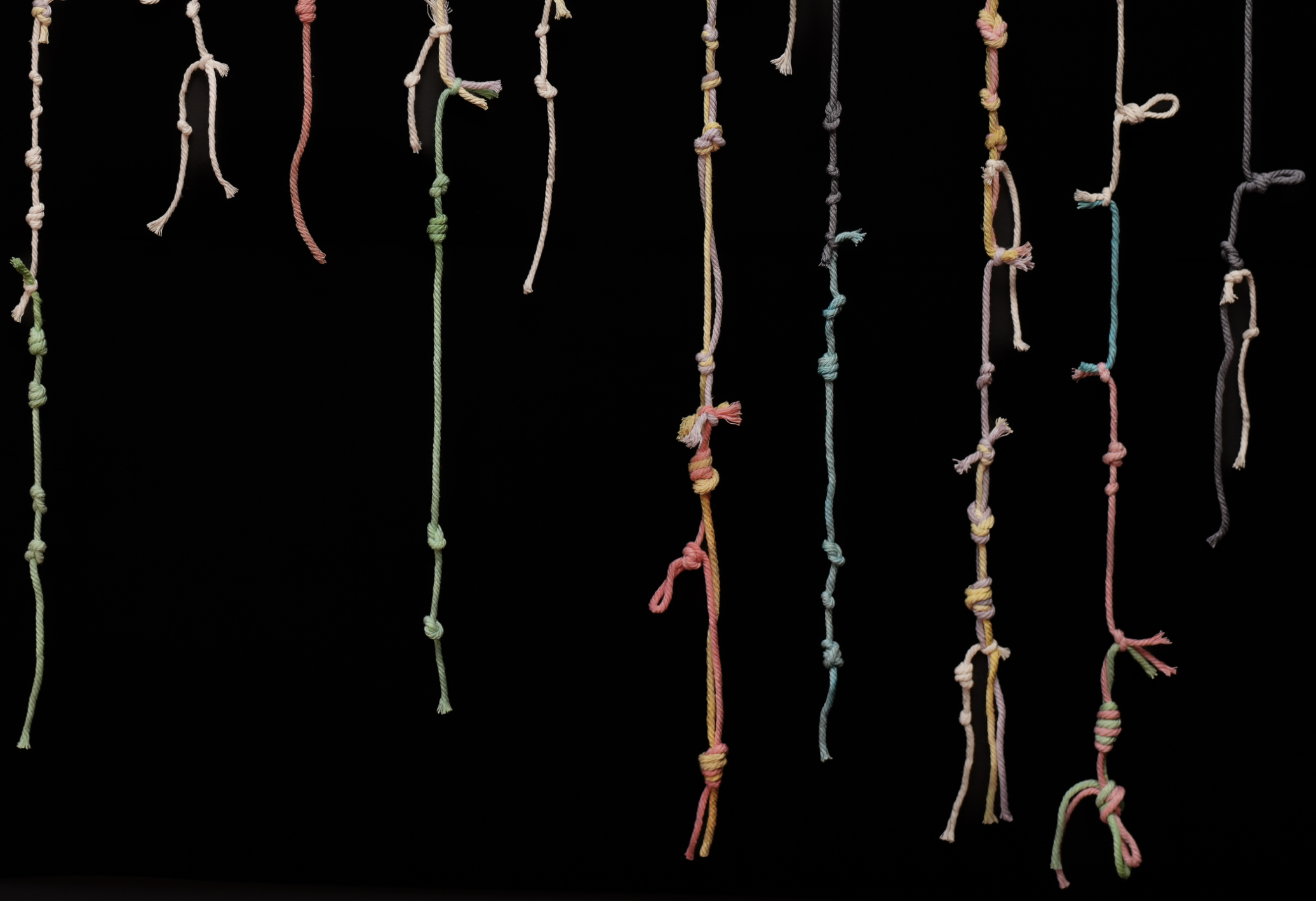
The ancient quipu are beautiful and mysterious, and were last read by seeing hands half a millenium ago.
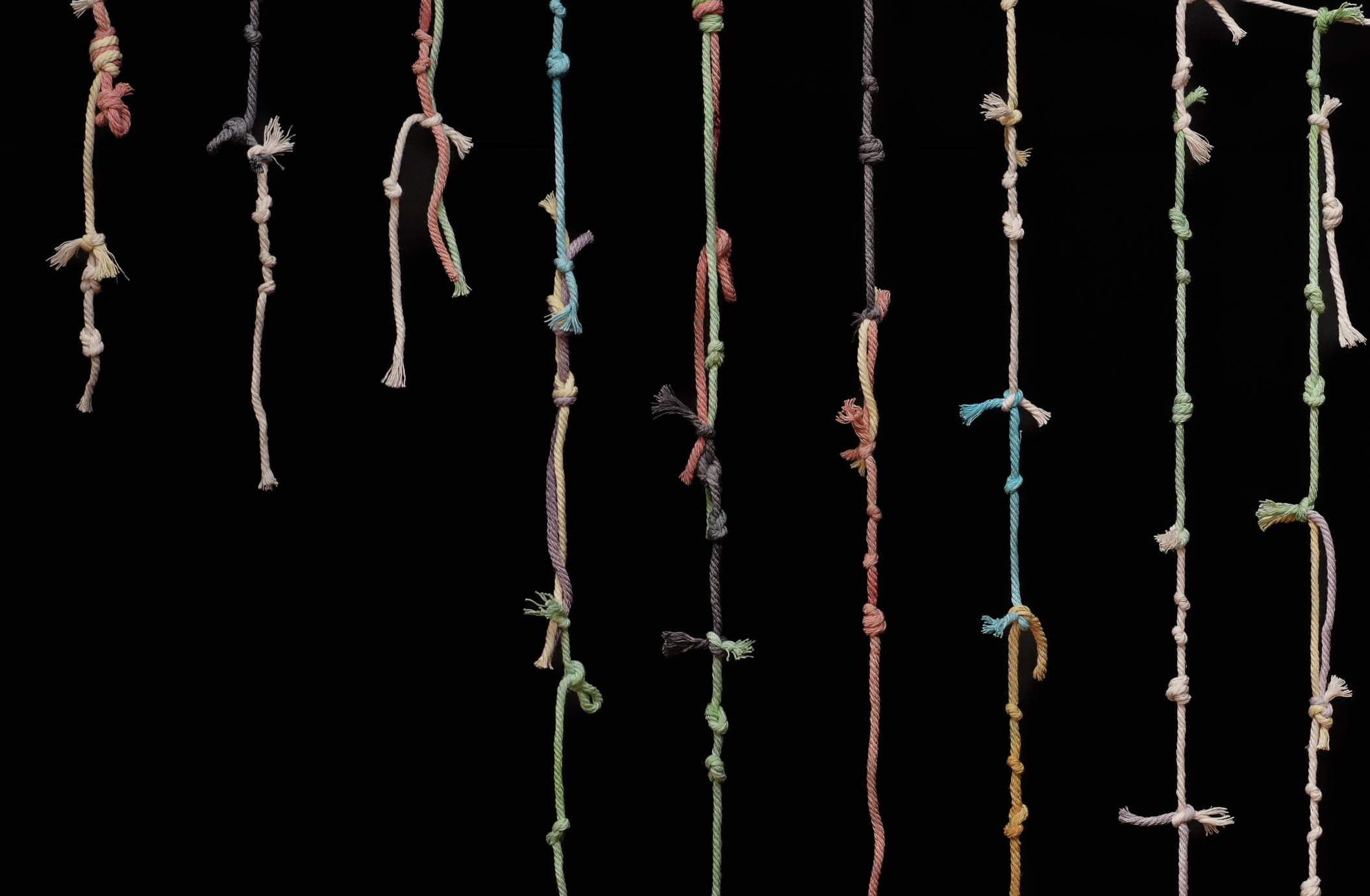
In this project, I set out to prove that the quipu could have been a writing system even though their decipherement remains elusive. To do this, I created my own quipu writing, able to represent all of the English language.
In the sections below, I will first explain how linguists understand the sounds of a spoken language. I'll then show how my quipu system can represent all of these sounds using colors and knots.
Structure
American English has eight vowels (nine in some dialects). Our normal Latin script does not have enough characters to represent every vowel. As a result, our letters represent multiple sounds. For instance, the letter "a" can make the sound in "cat," which is different from the sound in "tall." Linguists use the International Phonetic Alphabet (IPA) to distinguish these sounds unambiguously. In the quipu, the color of a section of the thread represents the vowel.
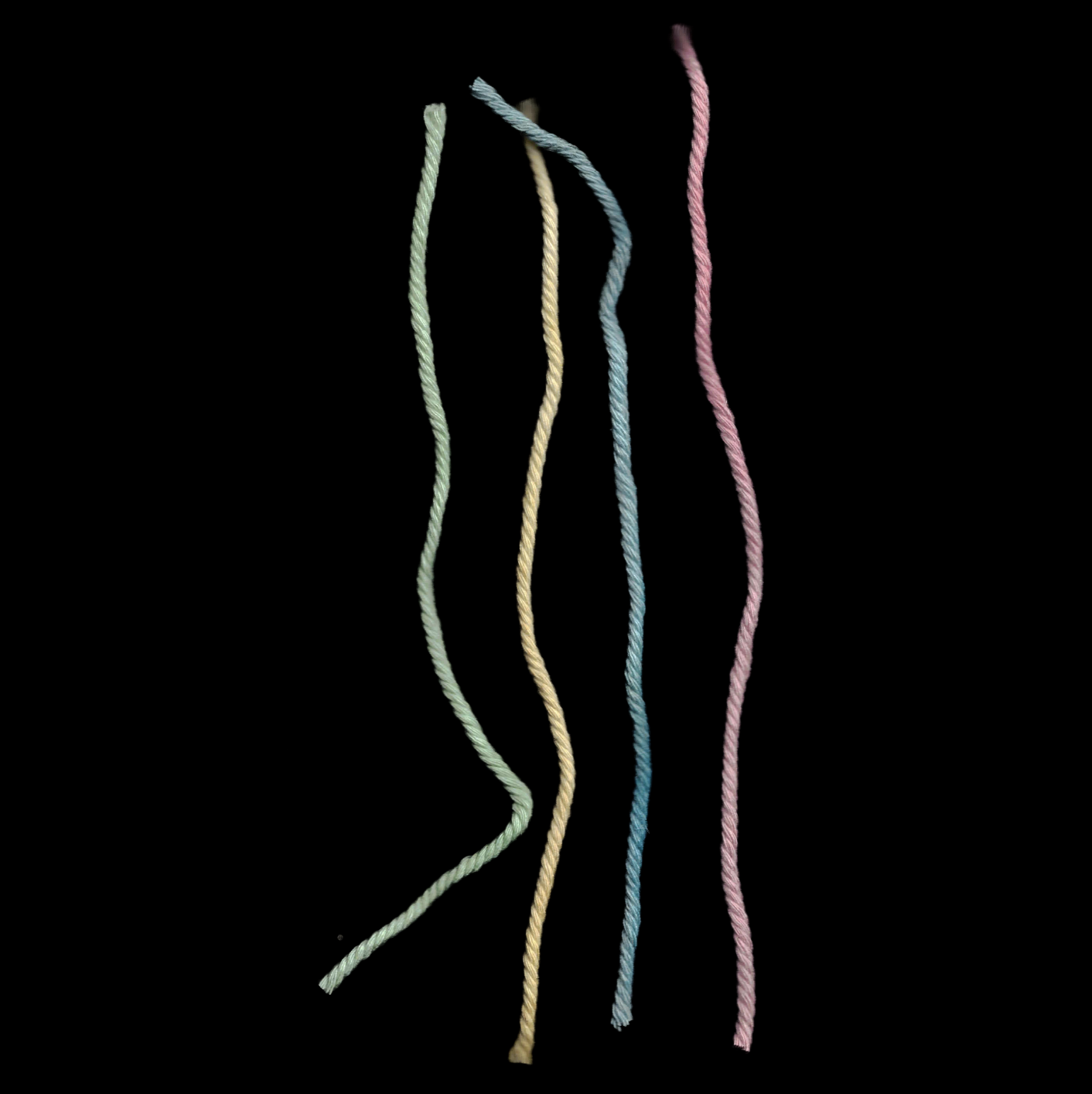
| Vowel (IPA) | Example (English) | Color | Frequency |
|---|---|---|---|
| ʌ | butt, sung, fun | white | 13% |
| ɪ | kit, sing, tip | black | 6% |
| i | meet, fleece, beam | red | 4% |
| ɑ~ɔ | father, bra, on | yellow | 4% |
| ɛ | bet, dress, empty | green | 4% |
| æ | cat, trap, sang | blue | 2% |
| u | goose, cruel, blue | purple | 2% |
| ʊ | foot, hook | brown | 0.5% |
English also has sounds called dipthongs, which are two vowels next to each other. There are five of them: /oʊ/ "low", /aʊ/ "crowd", /ɑɪ/ "cry", /eɪ/ "lay", and /ɔɪ/ "boy/" In the quipu, these are represented by two vowels coiled around each other:
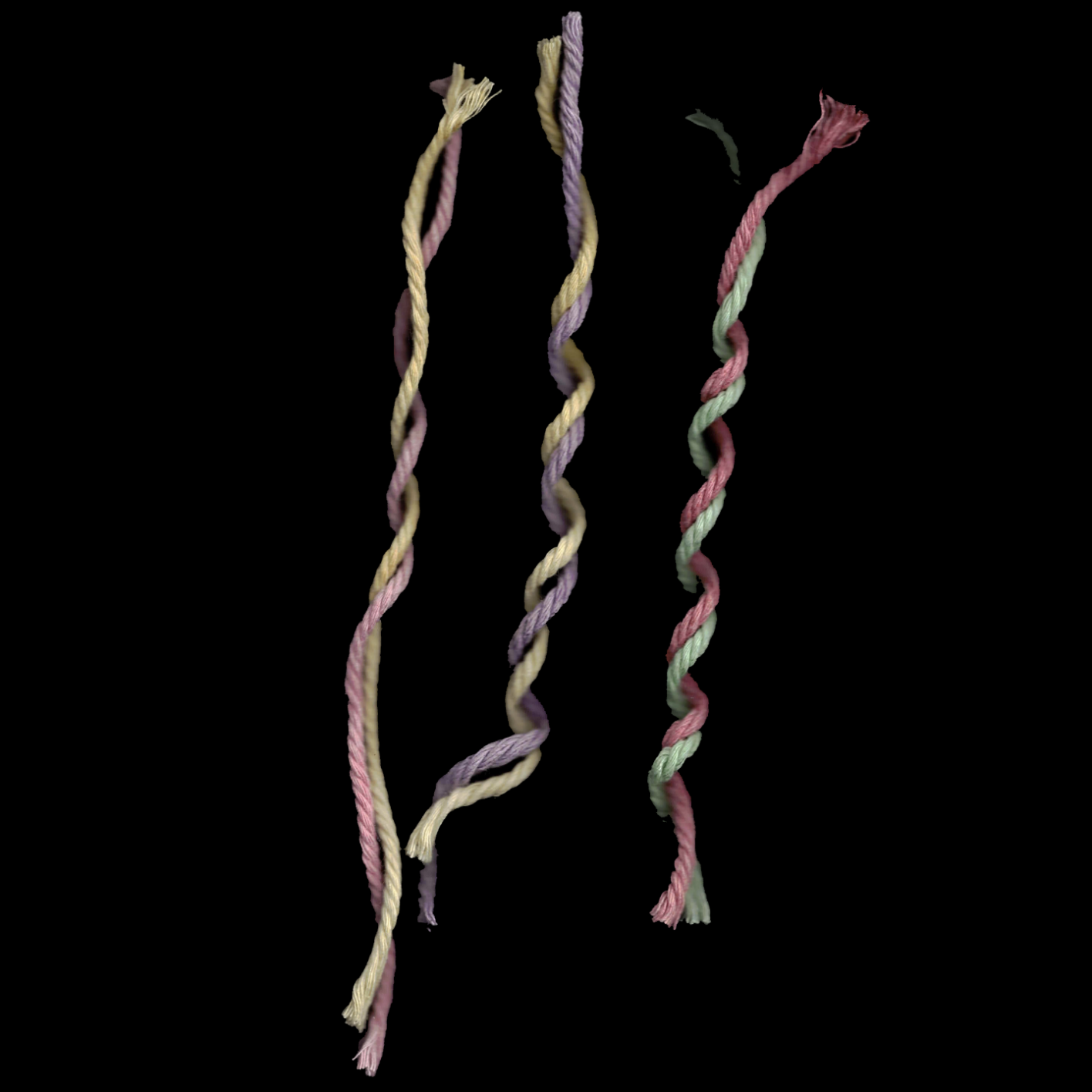
English also has sounds called consonants. In the quipu, these are represented by different types of knots: overhand (O), figure eight (A), long knot (L), and loop knot (U). Combinations of these knots placed next to each other represent different consonants:
Group 1 /r/
| Consonant (IPA) | Example (English) | Knot Pattern | Frequency |
|---|---|---|---|
| r | ring, ream, fear | L | 7% |
| l | all, love, slug | LO | 4% |
| j | yellow, yes, hallelujah | LA | 1% |
| w | win, swim, week | LU | 2% |
| h | him, ahead, high | LL | 1% |
Group 2 /n/
| Consonant (IPA) | Example (English) | Knot Pattern | Frequency |
|---|---|---|---|
| n | nut, snug, fun | U | 7% |
| m | mist, smug, him | UO | 3% |
| ŋ | sang, sink, singer | UA | 1% |
Group 3 /t/
| Consonant (IPA) | Example (English) | Knot Pattern | Frequency |
|---|---|---|---|
| t | butt, top, tree | A | 7% |
| d | do, add, drug | AA | 4% |
| p | path, sprung, top | AO | 2% |
| b | butt, ab, stub | AL | 2% |
| k | king, skim, ick | AOO | 3% |
| g | gay, grim, tag | AOL | 1% |
| tʃ | catch, China, chin | AUO | <1% |
| dʒ | giant, badge, judge | AUL | <1% |
Group 4 /s/
| Consonant (IPA) | Example (English) | Knot Pattern | Frequency |
|---|---|---|---|
| s | see, soup, fast | O | 5% |
| z | fizz, zoo, phase | OO | 3% |
| f | fin, sphere, half | OOA | 2% |
| v | vein, have, Vlad | OOL | 2% |
| θ | thigh, path, forth | OL | <1% |
| ð | the, father, breathe | OA | 3% |
| ʃ | shy, cash, emotion | OOU | 1% |
| ʒ | pleasure, beige | OOO | <1% |
A syllable consists of a vowel core and optional consonants at the beginning and end. Consonants at the beginning of a syllable are called "onsets"; at the end they're called "codas." A word like "cat" is written in the IPA as /kæt/. It has an onset and a coda; its syllable structure is CVC (Consonant - Vowel - Consonant). In the quipu, when a syllable is CV (Consonant - Vowel) like "the" /ðʌ/, the knots for /ð/ are tied directly onto the thread:
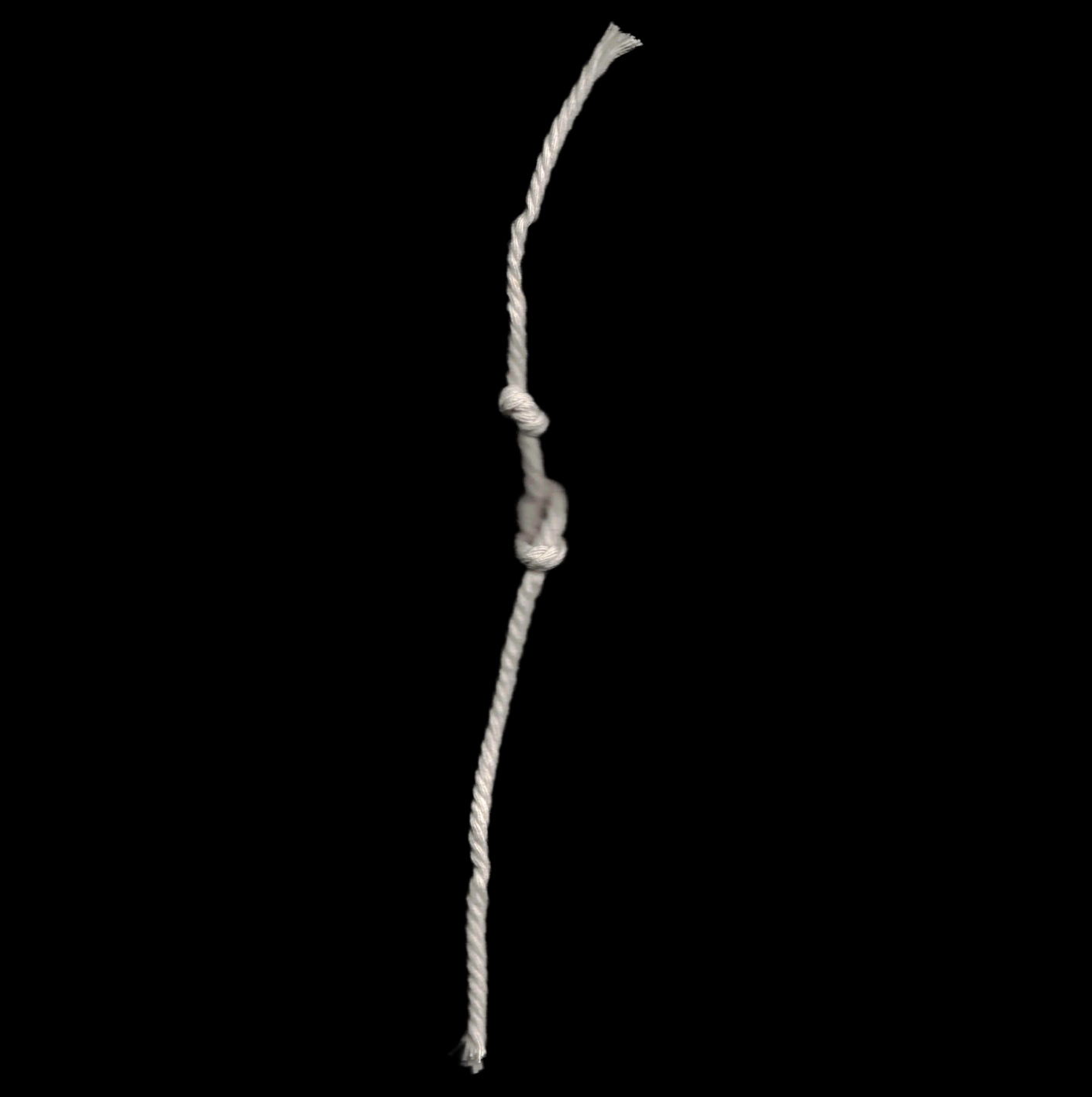
When an onset is extra long, an auxiliary string is added for the additional consonants. For instance, in the word "stew" /stu/ an extra coord with the knots for /t/ hangs off after the /s/":
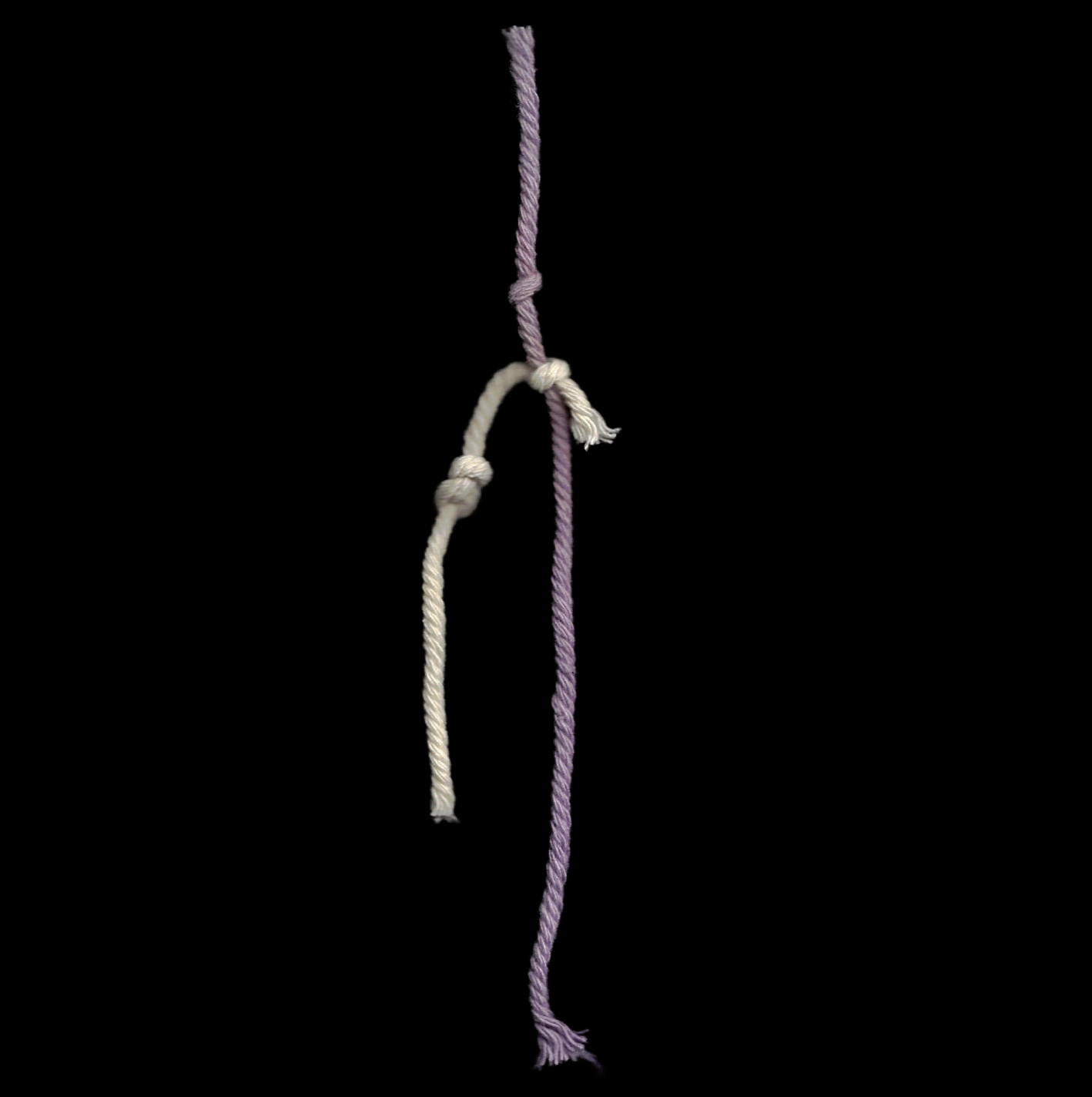
When a syllable has both an onset and a coda, the thread is extra long and space is left between the onset and coda:
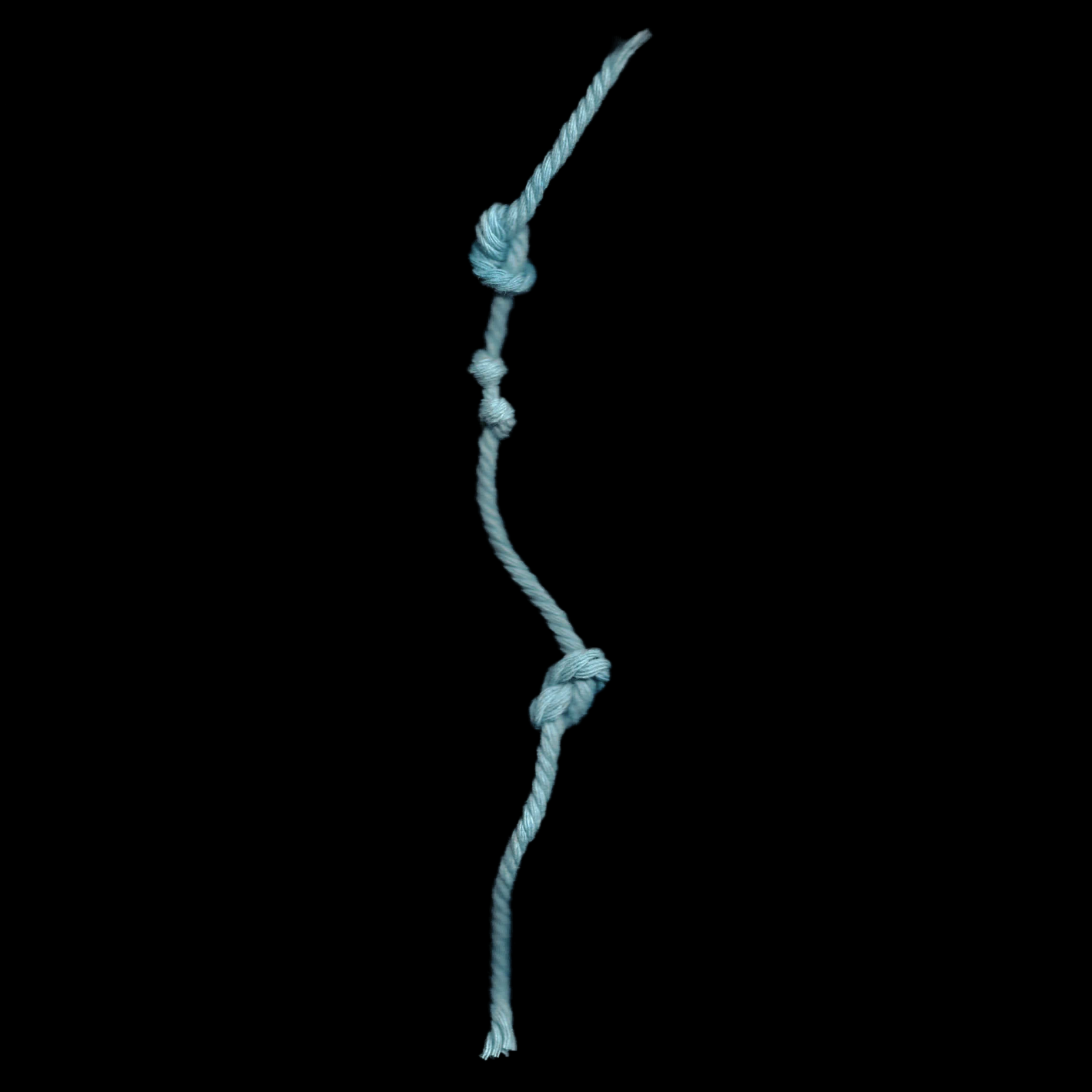
Many words have multiple syllables, like "camera" /kæmrʌ/:
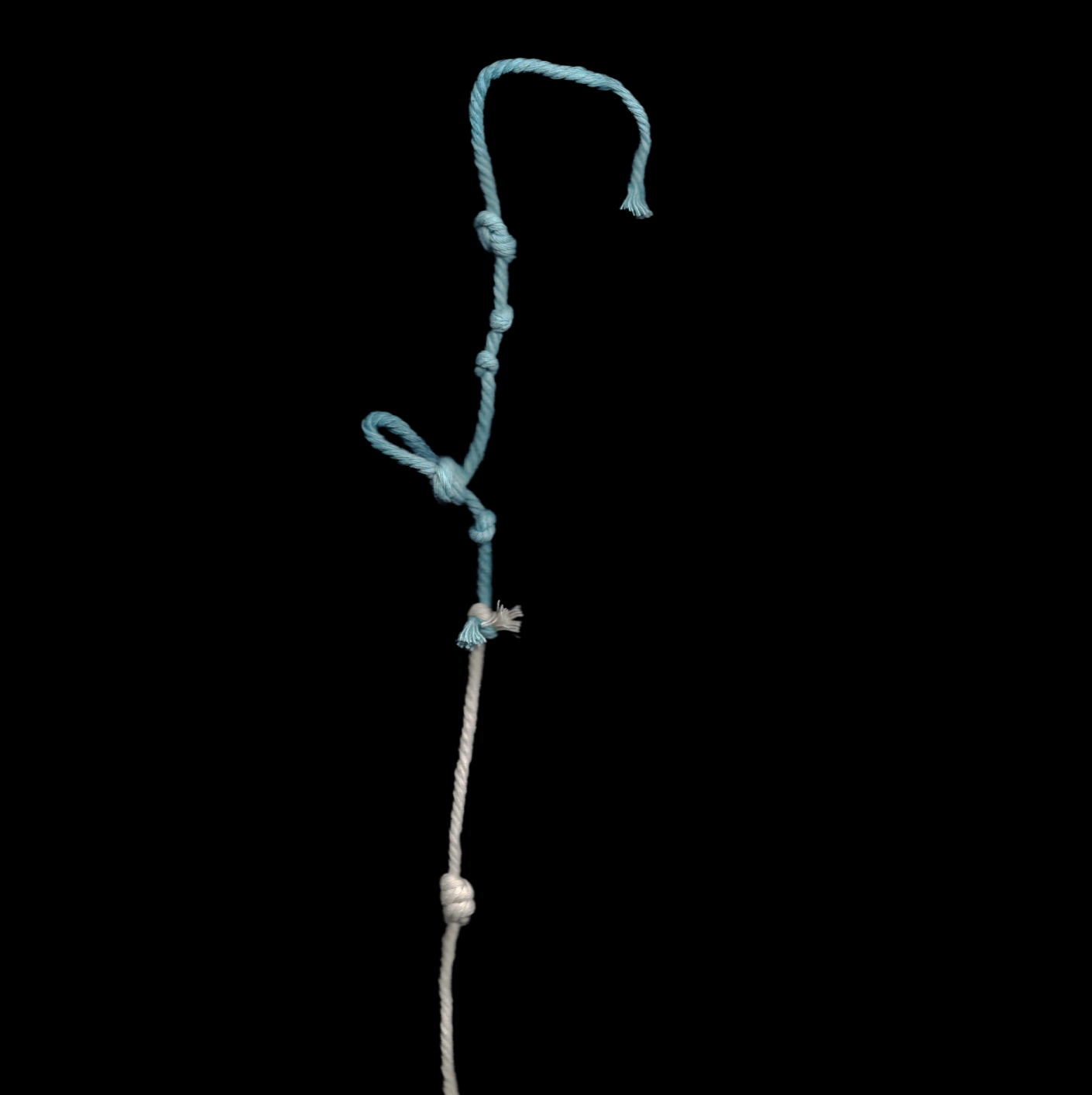
All the words in a sentence are tied together into long threads:
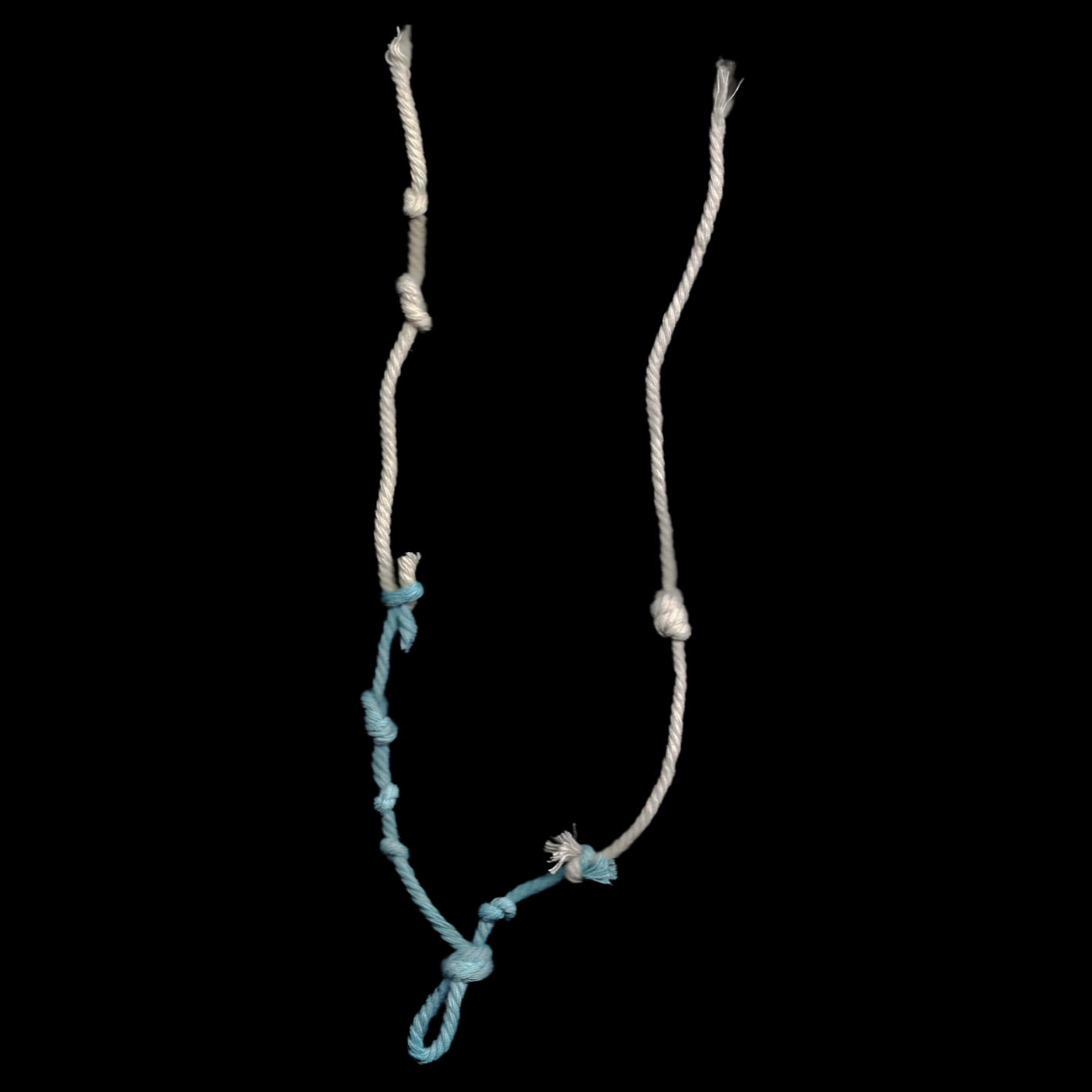
Sentences or phrases are tied to separate places on the main quipu "spine":

Future
Quipu can be used to represent the English language. However, the ancient Incan people spoke Quechua. In principle, the quipu can be modified to represent any spoken language. A tactile writing system that uses color, texture, and distance does not exist in the current cultures of the world - but it can.